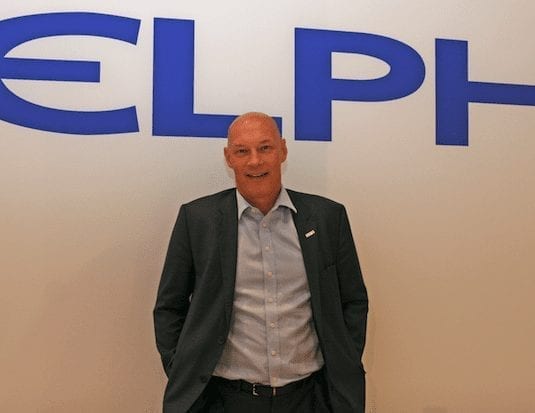In an exclusive interview with CarCare Business, Alex Ashmore, President of Delphi’s Product & Service Solutions, talks about his background, some of the automotive industry trends taking place and their impact on the aftermarket, both today and into the future.
CarCare Business: Can you tell us a little about your background in the industry?
Alex Ashmore: I’ve been involved with the automotive aftermarket for 25 years. I worked for one company extensively in sales, marketing, product management and then general management, including various regions and production facilities. Eventually I ended up in a position very similar to my current role at Delphi. I had an opportunity to work outside the industry and took a role at an industrial automation firm. I’ve since returned to the aftermarket and joined Delphi around six months ago.
CCB: From what we understand you’ve worked in different parts of the world, giving you unique experiences into how different markets operate, is that correct?
AA: Yes. Within my 25 years in this industry, roughly half of it was spent working in Europe and the other half in the Asia-Pacific region.
CCB: We’ve seen a lot of changes in the automotive industry as a whole over the last 25 years, especially with the move towards ever greater globalization. Can you tell us a little about that from an aftermarket perspective?
AA: Basically, we’ve seen globalization happen at different levels. Firstly, we’ve seen the OEMs adopt an increasingly global approach to vehicle development, engineering, production and marketing. About 20 years ago, OEMs began adopting global vehicle architectures with similar cars now taken to market and purchased in multiple regions.
The second trend has been the globalization of Tier 1 and aftermarket suppliers that provide parts for the OEMs as well as the automotive service industry. Now, what we’re seeing is the globalization of the distribution networks such as Trans-Atlantic alliances between trading groups and as well as acquisitions. Companies such as Uni-Select, KPA, GPC, NAPA and the Alliance group have been acquiring distributors, expanding their footprint in overseas markets such as the UK and Europe.
CCB: One of the challenges we still seem to see for both the OEMs and the aftermarket, concerns the lack of harmonization between vehicle safety and emissions standards, such as those between North America and Europe. What are your views on this?
AA: Although there are different regulatory environments around the globe due to local government requirements, politics and even consumer preferences, most of the legislative trends are the same—such as the need to reduce vehicle emissions and improve standards.
For suppliers like Delphi in both the OEM Tier 1 and aftermarket industries, it is essential to follow those broad trends and make the necessary adjustments in engineering and development for the regions in which we operate. Doing so allows us to deliver on a global basis while meeting local market requirements.
CCB: A recent announcement was the reorganization of Delphi into two distinct companies, can you tell us a little about that?
AA: A decision was taken to have two distinct operations. One side, Aptiv, will focus on electrical architecture to increase efforts towards developing connected and autonomous vehicles. The other will continue to focus on powertrain and the automotive aftermarket as Delphi Technologies. This is very important to us in the aftermarket as the well-established Delphi name continues.
CCB: We’ve been hearing many reports about how EVs are the way of the future in terms of vehicle powertrains, what are your thoughts on that from an aftermarket perspective?
AA: There are currently, several different trends as far as powertrain development goes. We have gasoline, diesel, hybrid and electric. Yet, based on the latest industry projections, as far as we can see, by 2025 only five percent of light duty vehicles will be fully electric. That means that 95 percent of the vehicles sold around the world in eight years time will still have an internal combustion engine.
CCB: What do you think that means for the future of the aftermarket?
AA: I believe it comes down to two things. Firstly, there is going to be an aftermarket industry built around the internal combustion engine for many, many years to come. Also, when you look at the numbers of vehicles in circulation globally (around 1.2 billion) compared with annual new car sales (around 72 million), the rate at which the latest technology comes to the aftermarket is quite gradual. Therefore, it is crucial to note that servicing the internal combustion engine is and will continue to be a very important part of the aftermarket for as far as I can see into the future.
Secondly, EVs and hybrids are becoming more popular and the aftermarket needs to be ready to provide products, service solutions and training to facilitate repairing these types of vehicles in increasing numbers.



